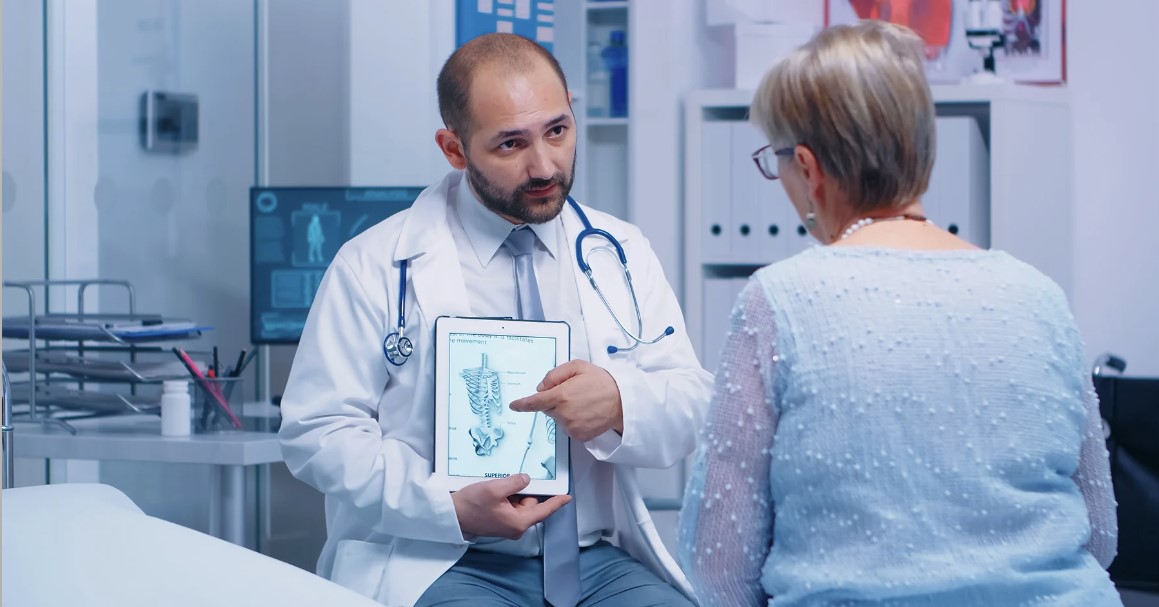English expressions for non-native English speaking doctors
Here’s a list of useful English expressions for doctors who are not native English speakers. These expressions can considerably improve communication with patients. Find the ones that will serve you the most.

1. Greeting Patients:
- “Please have a seat. How are you feeling today?”
- “Welcome back! What brings you in today?”
- “Good [morning/afternoon/evening], my name is [Doctor’s Name]. I’ll be your physician for today. How may I assist you?”
2. Obtaining The Medical History:
- “Could you please tell me more about your symptoms?”
- “When did you first notice these symptoms?”
- “Have you noticed any recent changes in your health?” Are there any factors that seem to worsen or improve your symptoms?”
- “Have you recently been in contact with anyone who has been ill?”
3. Conducting Physical Examinations:
- “I’ll need to check your back. Please let me know if anything feels uncomfortable.”
- “I’m going to listen to your heart and lungs with a stethoscope. Please breathe normally while I do this.”
- “I’ll need to assess your chest for any abnormalities. This might feel a bit cold or uncomfortable.”
- “I’m going to examine your stomach to check for any swelling. It won’t hurt, but it might feel a bit strange.”
- “I’m going to gently manipulate your shoulder to assess its range of motion. Let me know if you feel any pain or stiffness.”
4. Explaining Diagnosis and Treatment:
- “Based on your symptoms and test results, it seems likely that you have pneumonia.”
- “Here’s what we can do to manage and improve your condition.”
- “Let me walk you through the treatment plan and what to expect.”
5. Providing Instructions and Advice:
- “It’s important to take your medication exactly as prescribed.”
- “Remember to follow up with any appointments or tests we’ve scheduled.”
- “Here are some lifestyle changes that may help improve your health.”
6. Answering Patient Questions:
- “I’m here to answer any questions you have about your health.”
- “Your understanding is important to me. What questions do you have?”
- “Let’s address any concerns you may have before you leave today.”
7. Expressing Empathy and Understanding:
- “I understand this may be very difficult for you.”
- “I understand how you must feel, and we’ll work through this together.”
- “I appreciate your patience as we analyse your health concerns.”

8. Encouraging Healthy Habits:
- “In addition to your treatment plan, focusing on a balanced diet and regular exercise can support your overall health.”
- “Consider incorporating stress-reduction techniques like meditation or deep breathing into your daily routine.”
- “Eat vegetables and fruit instead of food that contains a lot of sugar. Soda drinks are liquid candy; drink water instead.”
9. Explaining Test Results:
- “Here are the results of your tests, and what they indicate about your health.”
- “If you have any questions about the results, I’m here to clarify and discuss them with you.”
10. Discussing Referrals or Further Consultations:
- “Based on our discussion today, I recommend consulting with a specialist for further evaluation.”
- “Let’s arrange a follow-up appointment to monitor your progress and adjust your treatment plan if necessary.”
11. Addressing Language or Cultural Barriers:
- “If you’re having trouble understanding anything, please let me know. I can arrange for an interpreter.”
- “I want to ensure you feel comfortable and understood during our interactions. Let me know if there’s anything I can do to assist.”
12. Providing Contact Information:
- “Here’s my contact information in case you need to reach me between appointments.”
- “Our clinic’s reception can assist you with scheduling appointments or addressing any administrative needs.”
13. Blood Extraction:
- “I need to draw some blood for testing. I’ll be inserting the needle into your arm to collect a blood sample. You may feel a quick pinch or sting.”
- “I’ll need to tie a tourniquet around your arm to make it easier to find the vein.”
- “I’m going to clean the area with an alcohol swab before inserting the needle, to prevent infection.”
- “You might experience some bruising or soreness afterward, but it should subside within a few days.”
14. Closing the Appointment:
- “Thank you for entrusting me with your care today. Take care, and I’ll see you at your next appointment.”
- “If anything comes up or you have questions after you leave, don’t hesitate to reach out.”
15. Planning a Next Appointment:
- “Based on today’s visit, I recommend scheduling a follow-up appointment in 3 months to monitor your progress.”
- “Please note the appointment in your diary. We will also send you a reminder by email, a week before.”
- “Before you leave, let’s make sure we have your contact information up to date for scheduling your next appointment.”
- “If you experience any worsening symptoms or have concerns before your next appointment, don’t hesitate to contact us.”
- “I’ll coordinate with the receptionist to finalize your next appointment for a check-up. She’ll provide you with all the necessary details.”
These English expressions for non-English speaking doctors:
- Guide patients through physical examinations, ensuring their comfort and cooperation during the process.
- Help establish rapport, provide comprehensive care, and ensure effective communication with their patients in various clinical situations.
Many doctors who understand the importance of efficient and accurate communication with their patients, have been coached by a professional language trainer to help them perfect the communication with their patients.
These practical English courses for doctors are also available for you.
